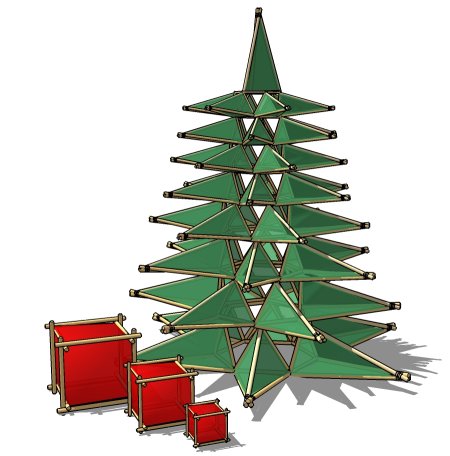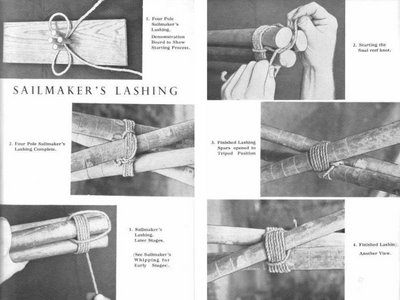 Last year Clarke at Scoutmaster posted some pioneering projects that he had drawn up. This got me thinking about how to model them in SketchUp and I finally got around to doing something similar. If the above cube looks like a quick and simple project, look again. Other than the obvious guys and bracing that needs to be added, there are some other problems...
Last year Clarke at Scoutmaster posted some pioneering projects that he had drawn up. This got me thinking about how to model them in SketchUp and I finally got around to doing something similar. If the above cube looks like a quick and simple project, look again. Other than the obvious guys and bracing that needs to be added, there are some other problems...To see how it's done, download the SketchUp model here. While you're at it, check out the competition that I posted this in, and I strongly recommend looking at some of the other objects that have been posted.












